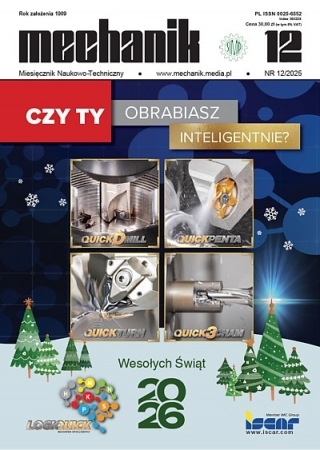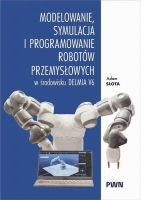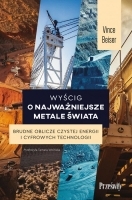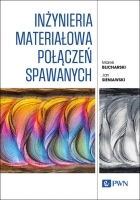Nowe metody geometryczne w wieloskalowej analizie topografii powierzchni: nachylenie i krzywizna *
Novel geometric methods in multiscale analysis: curvature and slope
Mechanik nr 11/2018 - Metrologia techniczna
STRESZCZENIE: Przedmiotem artykułu jest przedstawienie nowych, geometrycznych metod wielkoskalowych w opisie topografii powierzchni. Istotnym zagadnieniem w inżynierii powierzchni jest znalezienie zależności funkcyjnych między procesem wytwarzania a uzyskaną topografią lub między topografią a zjawiskami występującymi w trakcie jej oddziaływania z otoczeniem (np. tarciem, wytrzymałością zmęczeniową czy refleksyjnością). Właściwości geometryczne chropowatych powierzchni zmieniają się wraz ze skalą obserwacji, wynikającą z pomiaru lub obliczeń. Skoncentrowano się na dwóch nowych metodach analizujących nachylenie i krzywiznę. Krzywizna jest przedstawiana jako tensor, którego komponenty opisują maksymalną i minimalną krzywiznę, w tym ich wartości i kierunki. Nachylenie jest rozumiane jako orientacja w przestrzeni wektora normalnego do powierzchni. Przedstawiono przykładowe korelacje między nachyleniem i krzywizną a parametrami opisującymi ich oddziaływanie z otoczeniem i proces wytwarzania, wskazując na ich duży potencjał w rozwoju wieloskalowego opisu topografii powierzchni.
SŁOWA KLUCZOWE: metrologia powierzchni, metody wieloskalowe, krzywizna, nachylenie, korelacje
ABSTRACT: The aim of this paper is to demonstrate the use of novel geometric multiscale methods in the characterization of surface topographies with a view to establishing functional relations between formation processes and resulted topography or between topography and its performance during interaction with the environment (e.g. friction, fatigue or gloss reflectance). Geometric properties of rough surfaces change with the scale of observation, i.e., measurement or calculation. In this paper, I focus on two novel method, which analyse slope and curvature in multiple scales. The digital nature of measured surfaces is recognized and is not smoothed to fit a continuous function to the measured heights. Curvature is represented as a second order tensor, which components describe maximal and minimal curvatures and their directions. In order to describe curvature distributions for analyzed regions, statistical parameters, such as: mean and standard deviation, are used. Those measures are utilized to find correlations between them and certain formation or performance parameters. The other method described here bases on slope. In this work, two calculation techniques are presented using orientation normal vectors estimated through covariance matrix method or cross product. As a result of further processing, 3D distributions of direction cosines are obtained, based on which multivariate statistical parameters are calculated (incl. measures of dispersion and higher statistical moments). This paper also presents the sample strong correlations between slope or curvature, for actual measured textures, and manufacturing or performance parameters. This indicates a great potential of those two methods in the development of multiscale characterization of surface topographies.
KEYWORDS: surface metrology, multiscale methods, curvature, slope, correlations
BIBLIOGRAFIA / BIBLIOGRAPHY:
- Brown C.A., Hansen H.N., Jiang X.J., Blateyron F., Berglund J., Senin N., Bartkowiak T., Dixon B., Le Goïc G., Quinsat Y., Stemp W.J., Thompson M.K., Ungar P.S., Zahouani H. “Multiscale analyses and characterizations of surface topographies”. CIRP Annals – Manufacturing Technology. 67, 2, s. 839–862.
- ISO 25178-2 Geometrical product specifications (GPS) – Surface texture: Areal – Part 2.
- Zahouani H., Lee S.-H., Vargiolu R. “The Multiscale Mathematical Microscopy of Surface Roughness, Incidence in Tribology, Lubrication at the Frontier: The Role of the Interface and Surface Layers in the Thin Film and Boundary Regime”, s. 379– –390.
- Jiang X., Blunt L., Stout K. “Three-dimensional surface characterization for orthopae-dic joint prostheses”. Proceedings of the Institution of Mechanical Engineers, Part H: Journal of Engineering in Medicine. 213, 1, s. 49–68.
- Berglund J., Brown C.A., Rosén B.-G., Bay N. “Milled die steel surface roughness correlation with steel sheet friction”. CIRP Annals – Manufacturing Technology. 59, 1, s. 577–580.
- Sayles R.S., Thomas T.R. “The spatial representation of surface roughness by means of the structure function: a practical alternative to correlation”. Wear. 42, s. 263–276.
- Brown C.A., Charles P.D., Johnsen W.A., Chesters S. “Fractal analysis of topographic data by the patchwork method”. Wear. 161, 1–2, s. 61–67.
- Underwood E.E., Banerji K. “Fractals in fractography”. Materials Science and Engineering. 80, 1, s. 1–14.
- Bartkowiak T., Berglund J., Brown C.A. “Establishing functional correlations be-tween multiscale areal curvatures and coefficients of friction for machined surfaces”. Surface Topography: Metrology and Properties. 6, 3, s. 9.
- Bartkowiak T., Lehner J.T., Hyde J., Wang Z., Pedersen D.B., Hansen H.N., Brown C.A. “Multi-scale areal curvature analysis of fused deposition surfaces”. Proceedings – ASPE 2015 Spring Topical Meeting: Achieving Precision Tolerances in Additive Manufacturing, s. 77–82.
- Bartkowiak T., Brown C.A. “A characterization of process-surface texture interactions in micro-electrical discharge machining using multiscale curvature tensor analysis”. Transactions of the ASME. Journal of Manufacturing Science and Engineering. 140, 2, doi:10.1115/1.403760.
- Zhang X., Drake N.A., Wainwright J., Mulligan M. “Comparison of slope estimates from low resolution DEMs: Scaling issues and a fractal method for their solution”. Earth Surface Processes and Landforms. 24, 9, s. 763–779.
- Young G.C., Dey S., Rogers A.D., Exton D. “Cost and time-effective method for multiscale measures of rugosity, FD, and vector dispersion from coral reef 3D models”. Plos One. 12, 4, e0175341.
DOI: https://doi.org/10.17814/mechanik.2018.11.171
* Artykuł recenzowany




















